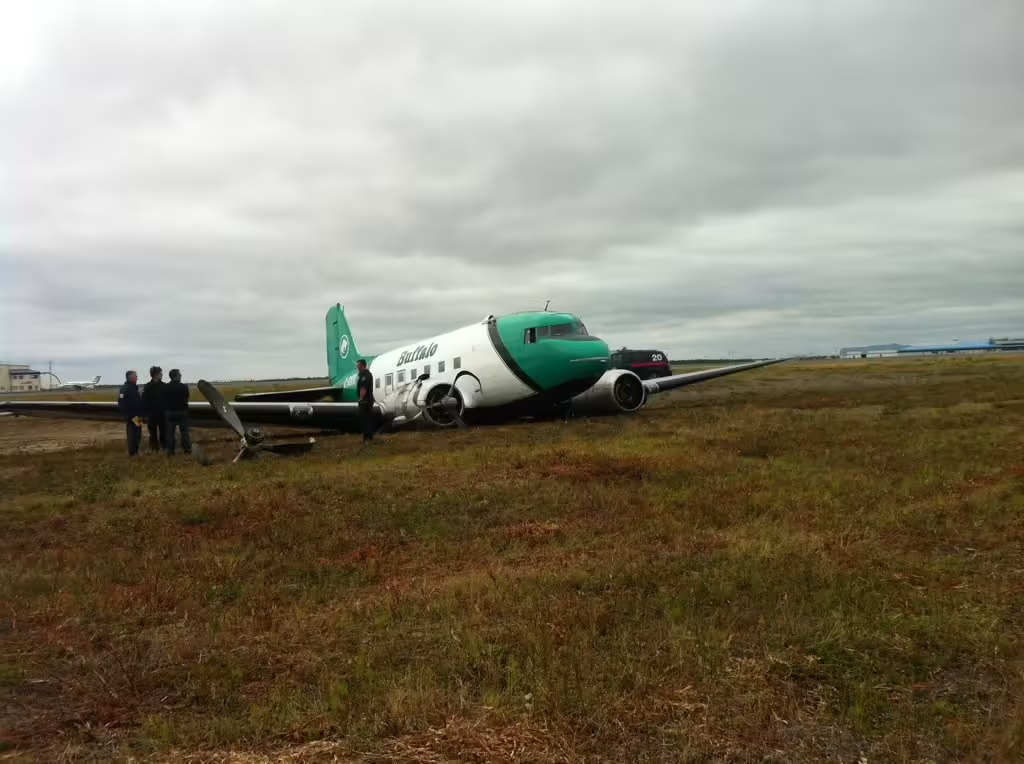
Table of Contents
- The Douglas DC-3 revolutionized air transportation and became the industry standard.
- It accounted for 80% of all civil air travel before World War II and reduced the average coast-to-coast travel time by seven hours.
- DC-3s were used extensively by the military during World War II, and some of them are still in service and are still favored at air shows today.
In the mid-1930s, the Douglas Aircraft Company introduced the DC-3, revolutionizing air travel and capturing the public’s imagination. Transcontinental and Western Airlines (TWA) inquired about the new aircraft, and Donald Douglas was approached by American Airlines CEO C.R. Smith got a call.
Boeing refused to sell the twin-engine Boeing Model 247 to other airlines until United Airlines bought all 60 of the planes it had ordered. Boeing was manufacturing aircraft for United Airlines. Knowing that they would never be able to compete with United, TWA and American Airlines, they requested Douglas to build a plane similar to theirs.
American Airlines agreed to buy 20 DC-3s
Smith promised Douglas that if his business could produce a jet like the Boeing 247, he would buy 20 planes with side-by-side beds. Although the DC-2 was a suitable aircraft at the time, it was too thin for a sleeper berth. Douglas was then manufacturing airplanes.
After speaking with Smith on the phone, Donald Douglas instructed his staff to design a sleeper plane that could go nonstop from coast to coast with as few stops as possible. On December 17, 1935, the prototype, known as the Douglas Sleeper Transport (DST), took off for the first time. The Wright Brothers’ historic flight to Kitty Hawk, North Carolina took place 35 years ago, which is why that date was chosen.
The DC-3 entered commercial service in 1936
On June 26, 1936, American Airlines put the Douglas DC-3 into service, operating flights between Chicago, Illinois and Newark, New Jersey. After the initial flights and the public’s positive response to the DC-3, airlines quickly realized that they could make money from passengers and not have to worry about government mail contracts. In 1936, KLM Royal Dutch Airlines took delivery of its inaugural DC-3 and began operating the world’s longest air route, connecting Amsterdam to Sydney, Australia.
Newark Airport was the largest airport in the New York metropolitan area in 1938, when the future LaGuardia Airport in Queens was being built for the 1939 New York World’s Fair. Early in the evening, an American Airlines DC-3 takes off from Newark, and while in the air, passengers will be drunk and served a gourmet meal on beautiful china. After the first fuel stop in Nashville, Tennessee, the plane took off once again, this time bound for Dallas, Texas. After a final fuel stop in Phoenix, Arizona, it will depart Texas and continue to Glendale, California, where it will land early the next morning.
American Airlines’ transcontinental DC-3 flights cut coast-to-coast travel times by seven hours. As soon as the DC-3 32 airlines had ordered 400 aircraft in the pre-war years; By 1940, DC-3 aircraft accounted for more than 80% of all civil air travel. It went into service and became the gold standard.
WWII and the Douglas C-47
After the outbreak of World War II in Europe, many commercial DC-3s were commandeered by the military, and production of the type shifted from passenger aircraft to military cargo aircraft known as the Douglas C-47. After the end of hostilities, private operators such as Cubana de Aviación, which was the first airline in Latin America to operate direct flights to Miami, were able to purchase DC-3s and C-47s at low cost.
During the Beilein Airlift at the start of the Cold War, C-47s played a vital role in delivering nearly two million tons of food and supplies to the beleaguered city. After seeing duty in the Korean War, the C-47 was modified and sent to Vietnam to serve as a gunship.
READ | U.S. Flight path of U-2 spy planes from Navy aircraft carriers
READ | The Ultimate Turboprop: Overview of the Pilatus PC-12
READ | World’s first hydrogen-fueled VTOL aircraft that “can be fully refueled for just $500”
READ | Out of Service: The History of the Douglas DC-7


4 thoughts on “Why was the Douglas DC-3 aircraft so important?”